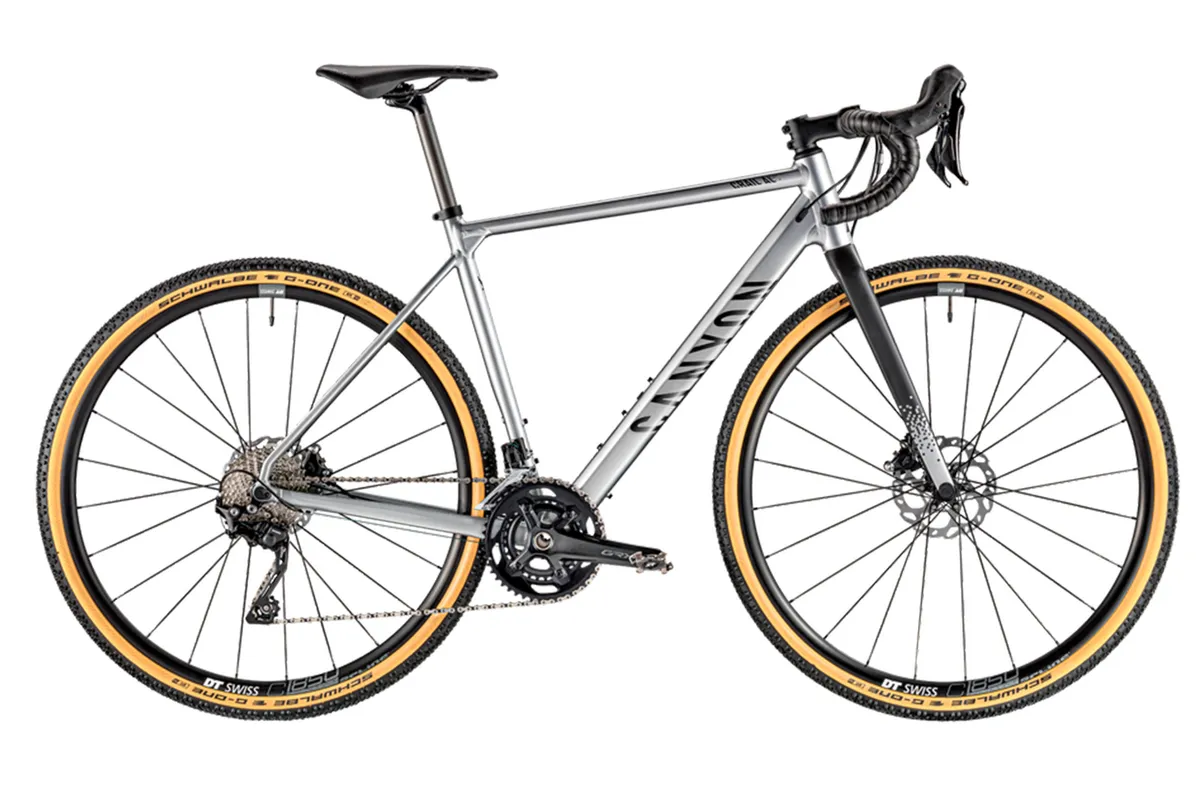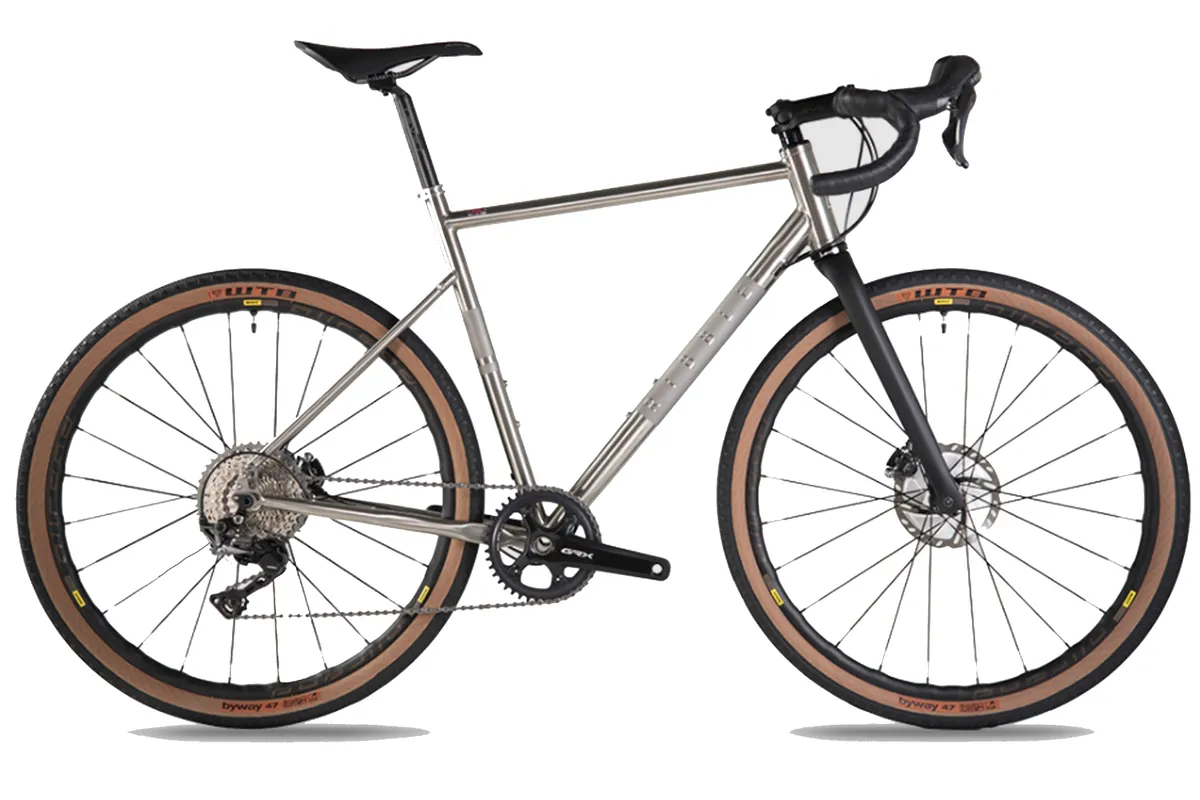Gravel bikes have swiftly become extremely popular with both sworn roadies and trail explorers alike over the last few years.
Many promise a sought-after versatility, providing the rider with a high-spec racing machine, as well as a vehicle for off-road jaunts and longer bikepacking adventures. Here, expert bike mechanic Toby, from Evans Cycles, explains all you need to know.
What is a gravel bike?
Often referred to as a bike that offers ‘the best of both worlds’, gravel bikes are characterised by a design that incorporates road-bike drop handlebars (which often flare out for added stability), relaxed geometry (offering a more upright, comfortable riding position), lower gearing, and wider tyres to assist on uneven surfaces.
The biggest pro of going gravel is versatility, as this type of bike gives riders the option of linking up forest trails, gravel roads, bridleways and other uneven surfaces, as well as being not too heavy and clunky for road riding or even racing.
Can you use a gravel bike for a triathlon?
For triathletes, gravel bikes come into the mix as they offer the opportunity to take training sessions off-road, adding a much-needed sense of exploration and fun. Many gravel bikes can also be loaded up for multi-day adventures, providing a means to escape to the great outdoors.
Of course, wider tyres and stable handling also make gravel bikes a great option for training through the winter, giving you more confidence in challenging conditions and allowing you to save your expensive aero machine for racing.
That said, there’s no reason why you can’t use your gravel bike for some fast road racing and triathlons. They're typically heavier and a bit more clunky than a sleek aero roadie, but you can always invest in a road-orientated, race-ready wheelset or even add some aerobars to make your gravel bike triathlon-friendly.
How does a gravel bike differ from a road and triathlon bike?
When it comes to the materials used in gravel bikes, they vary as much as their road counterparts, although the most common you’ll come across are carbon and aluminium. Remember that the frame is always at the heart of your bike. While you can upgrade other components, the frame will remain constant and, therefore, should be your first focus.
The geometry of gravel bikes is something worth knowing about. Designs tend to be more relaxed, longer and more stable, as they’ve been specifically designed for challenging off-road riding. The introduction of one-by drivetrains allows for greater tyre and mud clearance, which ultimately means less opportunity for components to need fixing.
What are the gears like on a gravel bike?
Gearing is one of the most important aspects of any gravel bike, but these can vary as it depends if you’re looking to prioritise speed or are seeking a set-up more focused on longer adventures.
One of the most common set-ups you’ll come across is a compact 50/34t chainset, which is great for riding a mix of tarmac and gentle off-roading, while keeping the baggage to a minimum.
As gravel bikes have evolved and become more popular, we’ve seen the development of gravel-specific groupsets from the likes of Shimano (see the brand's GRX range), SRAM (see the XPLR range) and Campagnolo (the Ekar range). It’s an area we’d recommend doing your homework on to find the right kit for your cycling needs and terrains you plan to explore.
Gravel bike tyres
One of the most defining featuring of any gravel bike is its tyres. Clearance for tyres can vary significantly, with some bikes even able to accommodate mountain bike tyres. Typically, gravel bike tyres come in around 40mm, which is considerably wider than what you may have experienced on a pure road bike. You’ll notice that the tyres are knobbly for added grip, and more similar to those found on a mountain bike than a road one.
Gravel tyres also help you be able to run your psi (tyre pressure) considerably lower (by half or more) for added comfort and grip on those lumpy and gravely surfaces. Running your tyres as tubeless will also help enable you to do this while limiting the risk of punctures.
If there’s one bit of advice we’d offer, it’s to think about the terrain and conditions you’re riding on, as wet and muddy days will require a deeper tyre pattern than those dryer days.
Best gravel bikes for triathlon
Our sister title BikeRadar has spent many hours, days and weeks testing the best gravel bikes to hit the market in 2021. Here's a pick of the best...
Boardman ADV 9.0

- £1,800
A lightweight machine thanks to its carbon-fibre frame, you'll be hard-pressed to find a bike of this spec at a better price. Shimano GRX components and a 46/30 crankset, plus 11-32t should help you tackle hard climbs and fast descents.
Read BikeRadar's full Boardman ADV 9.0 review.
Bianchi Arcadex

- £3,250
Reviewed by BR as having a "road bike feel with gravel capabilities", the Arcadex is road bike giant Bianchi's first venture into the gravel world. It should also manage rough terrain and also boasts Shimano GRX components.
Read BikeRadar's full Bianchi Arcadex review.
Canyon Grail 6

- £1,649
This versatile aluminium frame gravel bike from Canyon comes with gravel-specific gearing, with Shimano GRX 2x10 transmission and hydraulic brakes. Swap out the tyres and you have a road speed machine. This model is also available in a women-specific version.
Read BikeRadar's full Canyon Grail 6 review.
Ribble CGR Ti Gravel

- £2,099
Complete with sleek, brushed titanium finish to get you feeling like a svelt speed machine, the Ribble provides "exceptional value for money" thanks to its impressive specs, while the titanium frame should prove more resistant to fatigue than other materials like aluminium.
Read BikeRadar's full Ribble CGR Ti 650b review.
Marin Nicasio

- £845
Aside from the obvious amazing price-point here, BR says the Marin has a "cleverly chosen spec and excellent geometry", is one of the most fun gravel bikes to ride and is ideal for bikepacking. So if you're after a multi-purpose steed, the Marin could be the pick for you.
Read BikeRadar's full Marin Nicasio + review
Top image credit: Getty Images
